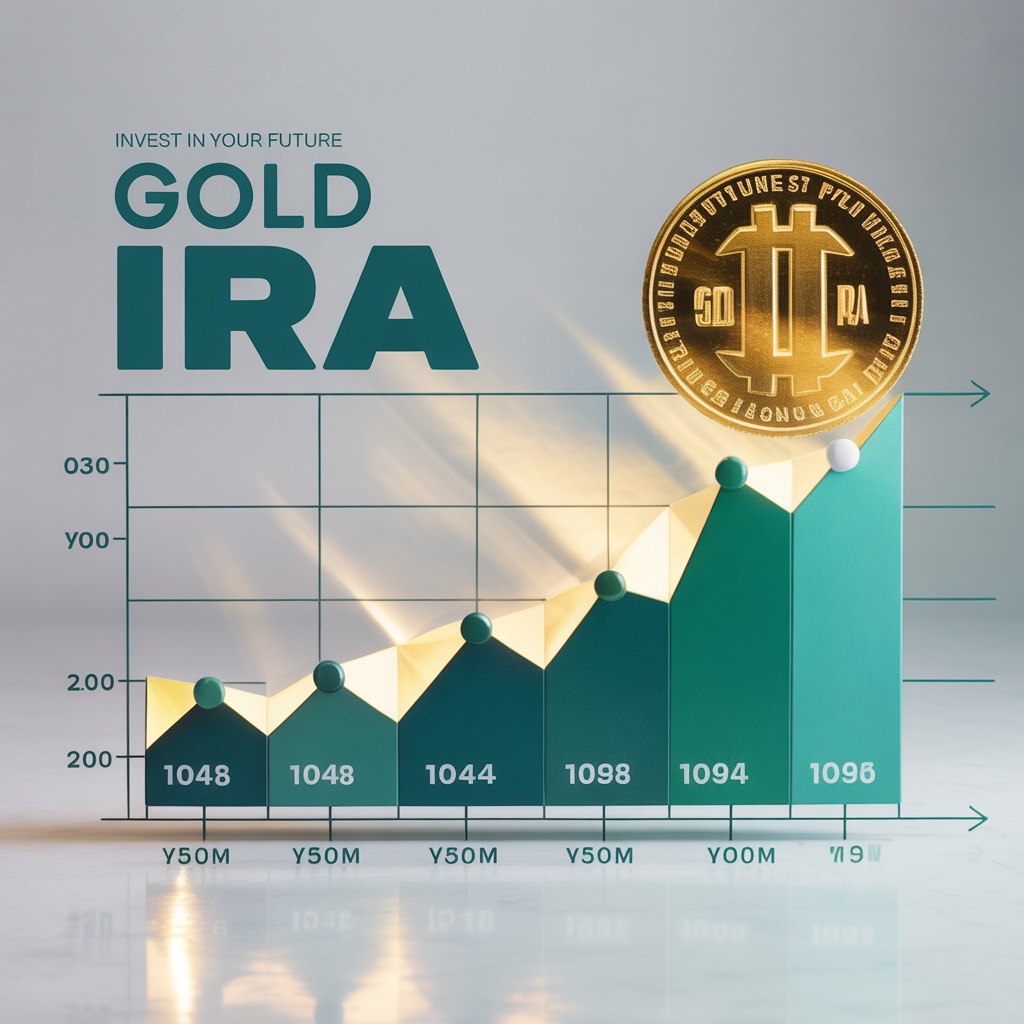Over time, setting up a Gold IRA can be a smart way to protect your retirement, but you must avoid common errors that can cost you dearly. In this how-to guide, you’ll learn to select a reputable custodian, follow IRS storage and purity rules, control fees, and diversify within your precious metals holdings so your investment works for your long-term goals.
>>>>>>>>>Get Your Free Gold IRA Kit<<<<<<<<<<

Misconceptions That Lead to Costly Errors
Misconceptions about Gold IRAs often stem from assuming they operate exactly like your traditional IRA. You might think the only difference is the metal. Still, a Gold IRA is typically a self-directed account that requires an IRS-approved custodian, storage in an approved depository, and adherence to the same contribution limits as other IRAs for 2024, which means a $7,000 limit ($8,000 if you’re 50 or older). Confusing ownership rules, storage requirements, and eligible products can lead to penalties or disqualification of tax-advantaged status if, for example, you attempt to store IRA metals at home or buy ineligible pieces.
Expect additional logistical and cost differences you might not see with stocks or mutual funds. Dealer premiums often range from about 3% to 8% over spot price for common bullion coins, while storage fees commonly fall between roughly $75 and $200 per year or about 0.25%–1% of account value. Failing to factor those numbers into your return projections can turn what looks like a safe hedge into an underperforming allocation once fees, spreads, and liquidation costs are included.
The Difference Between Traditional and Gold IRAs
Traditional IRAs and Gold IRAs share the same tax treatment and annual contribution ceilings, but the mechanics differ sharply. You’ll be using a self-directed structure for physical metals, which means your custodian’s role is administrative; they hold the title and process transactions rather than sourcing or valuing bullion for you. Gold bullion generally must meet a minimum fineness (commonly cited at 99.5% for bullion, though certain government-minted coins are also allowed), and the IRS requires storage in an approved depository instead of at-home safes.
Liquidity and valuation work differently as well: selling physical metal typically incurs a buy/sell spread and dealer commission that can be 2%–10%, and appraisals or third‑party verifications may be needed for large holdings or insurance purposes. Planning for Required Minimum Distributions (RMDs) at age 73 means you should keep some portion of your account in liquid assets or factor in potential delays and costs when converting metal to cash for withdrawals.
Common Assumptions That Can Misguide Investors
One frequent assumption is that gold only moves upward and therefore requires no active management; historical volatility disproves that. Gold climbed to about $1,900/oz in 2011, then fell to roughly $1,050/oz by 2015, illustrating multi-year swings. Other misleading beliefs include the assumption that every dealer offers the same spot-plus premium pricing, the expectation that custodians will handle dealer selection and buybacks for you, or the notion that storage is a trivial administrative step. Each of those assumptions can leave you exposed to hidden costs, counterparty risk, or illiquidity when you need to access funds.
Practical consequences show up quickly: a buyer who paid an 8% premium at a market peak can see that cost wipe out gains during a downturn, while another investor who purchased a collectible coin later deemed ineligible by their custodian faced tax consequences and had to liquidate at a loss. Treat stories like these as warnings that the wrong assumptions about pricing, eligibility, and custody can be financially damaging.
To protect your position, ask targeted questions before you commit: request a written fee schedule that lists setup, custody, storage, insurance, and liquidation fees; confirm whether storage is segregated or pooled; verify the depository’s insurance and request coverage limits in writing; and ask dealers for typical buy/sell spreads and historical examples of execution times. Verify custodians against IRS-approved lists and check dealer reputations through third-party reviews and the Better Business Bureau, so you don’t rely on assumptions when your retirement savings are at stake.

The Crucial Role of Custodians
Custodians perform the back-office work that keeps your Gold IRA compliant and operable: they process rollovers, arrange purchases and sales of bullion, file IRS forms such as Form 5498 and Form 1099-R, and coordinate storage with approved depositories. Your choice of custodian directly affects how quickly trades settle (often within 24–72 hours for purchase orders) and how reliably your transactions are reported to the IRS; failures here can trigger taxes, penalties, or even disqualification of tax‑advantaged status.
Different custodians specialize in different areas: banks and trust companies may offer conservative reporting and broad regulatory experience, while niche self-directed IRA custodians handle precious-metal specifics and depository relationships more fluently. Expect typical cost components such as a one-time setup fee ($0–$300), annual administrative fees ($50–$300), and storage fees ($100–$400/year depending on segregated vs. commingled storage). If a custodian’s processes are opaque or fees look unusually high, say a 1% annual charge on a $50,000 rollover (about $500/year), your net returns can be materially reduced over time.
>>>>>>>>>>>Compare Top Gold IRA Providers<<<<<<<<<<<<
How to Choose a Qualified Custodian
Ask for the custodian’s legal status and operating history: you want an entity that is a bank, federally or state‑chartered trust company, or a specialized IRA custodian with documented experience in precious metals. Request concrete numbers on how many Gold IRA accounts they manage, years in business, and the depositories they use (common choices include Delaware Depository and insured Brink’s facilities). Demand a sample account agreement and recent customer statements so you can verify how transactions, fees, and reporting are presented.
Watch for warning signs such as vague fee disclosures, pressure to buy from affiliated dealers without clear conflict‑of‑interest policies, or refusal to provide client references. Check third‑party sources, BBB ratings, Trustpilot reviews, and any regulatory actions, and confirm how quickly they settle purchases and process rollovers (a reasonable target is under 10 business days for depository transfers). Insist on written confirmation that your metals will be stored under the terms you requested (segregated vs. pooled) and that the custodian will handle all IRS reporting.
Assessing Fees and Services Effectively
Compile a detailed fee spreadsheet before you sign anything: common charges include setup fees ($0–$300), annual custodial/admin fees ($50–$300), storage and insurance ($100–$400/year for segregated storage), per‑transaction fees ($20–$100), and occasional shipping or liquidation charges (sometimes an additional 1–3% on sales). Compare flat fees versus percentage‑based fees. Flat fees can favor smaller accounts, while percentage fees can become costly as your balance grows (for example, a 0.5% fee on a $200,000 balance equals $1,000/year).
Evaluate services beyond sticker price: does the custodian provide online account access, timely monthly statements, dedicated account reps, and clear procedures for RMDs and liquidations? Confirm whether storage is segregated (your bars held separately) or commingled (pooled), since segregated storage typically costs more but prevents disputes over ownership and bar identification during liquidation. Ask how bundled pricing works. Some custodians offer lower per‑year fees for larger balances or for accounts that combine custody and depository services.
Run a multi‑year cost projection: take an expected account average (e.g., $50,000), add combined annual fees (say $400/year), and calculate the percentage drag $400 on $50,000 equals a 0.8% annual drag, which compounds over a five‑ to ten‑year horizon and can erode thousands of dollars in potential gains. Negotiate where possible; many custodians will waive a setup fee or reduce storage rates for larger rollovers, so use your projected balance as leverage when comparing providers.

Navigating IRS Guidelines: What You Must Know
Specific IRS rules determine which metals qualify for a Gold IRA, how they must be held, and what counts as a prohibited transaction. Gold bullion typically must meet a minimum fineness of 99.5% (0.995), though the IRS also allows certain government-minted coins with lower fineness. Examples include the American Gold Eagle (.9167) and the South African Krugerrand. Storage rules require that your metals be held by a qualified trustee or custodian in an IRS‑approved depository; any attempt to hold IRA metals at home or to take personal possession can trigger a taxable distribution.
Recordkeeping and reporting matter as much as the metal itself. You should expect custodians to provide assay certificates, transaction receipts, and periodic statements; those documents support your position if the IRS audits your account. Also, account for distribution rules. Required Minimum Distributions begin at age 73 and coordinate liquid assets to cover RMDs so you aren’t forced to liquidate bullion at an inopportune time.
Eligible Precious Metals: The IRS Requirements
Gold must meet the IRS purity standards (again, 0.995 for most bullion), and silver, platinum, and palladium each have their own minimum fineness levels under the IRS rules or are accepted when issued as specific government-minted coins. Permitted coins commonly used in IRAs include the American Gold Buffalo, Canadian Maple Leaf, Austrian Philharmonic, and the Krugerrand. Collectible coins, jewelry, and pieces with numismatic value that exceed their melt value are not eligible for inclusion in an IRA.
Before you buy, verify eligibility with both your custodian and the dealer: ask for the coin’s hallmark, assay certificate, and serial/lot numbers where applicable. Confirming IRS acceptance in writing prevents costly mistakes; purchasing an ineligible item can cause the entire transaction to be treated as a distribution.
Consequences of Non-Compliance and How to Avoid Them
Non-compliance can be expensive. The IRS may treat prohibited transactions or unauthorized possession as a distribution, making the full value of the IRA immediately taxable as ordinary income and potentially subject to an additional 10% early withdrawal penalty if you’re under 59½. On top of taxes, you could face interest, penalties, and an audit that requires extensive documentation to resolve.
Common violations include storing metals at home, buying ineligible coins, engaging in transactions with disqualified persons (family sales, for example), and using a non‑approved depository. You prevent those outcomes by using an IRS‑approved custodian and depository, requesting written confirmation of segregated storage and insurance, and obtaining assay and purchase documentation for every item. Keep a checklist for each transaction: custodian authorization, depository receipt, purity certificate, and invoice.
If you discover a potential violation, act quickly: halt the transaction if possible, notify your custodian and tax advisor, and assemble all documentation (purchase receipts, storage agreements, communications with the dealer). Early remediation and a clear paper trail often limit the IRS’s remedies and can reduce the financial impact compared with letting non-compliant arrangements persist.
Financial Blind Spots: Fees and Overlooked Costs
Hidden charges can turn what looks like a smart diversification move into a slow bleed on returns. You’ll encounter setup fees (commonly $50–$300), annual custodian fees ($75–$300 typical), storage charges that range from a flat $50–$150 to a percentage-based fee of 0.25%–0.75% of your holdings per year, and dealer premiums on purchases that often run from 0.5% up to 10% over spot depending on product and market demand. Add shipping, insurance, and potential liquidation fees, and your first-year outlay on a $100,000 position can easily exceed $1,500–$2,000 once premiums and fixed charges are included.
Fees matter not just in year one but because they compound against your portfolio over time. A 0.5% annual storage fee on $200,000 of metal costs you $1,000 per year, and if you also pay a 0.5% custodian fee, that’s another $1,000 annually, which is $20,000 over 10 years before considering market performance. You need to spot variable versus fixed charges and demand a full, written fee schedule to avoid surprises that quietly erode your retirement capital.
Understanding the Various Fees Incurred
Dealership premiums are often the largest one-time cost: 1 oz gold coins (e.g., American Gold Eagles) typically carry markups of 3%–7%, while generic minted bars can be as low as 0.5%–2%. Custodial administration commonly includes account setup and annual maintenance; some custodians waive setup but charge annual rates, whereas others use a flat fee plus a per-transaction charge. Storage models vary: segregated storage (your bars held separately) costs more than pooled storage, which can save you several hundred dollars per year but sacrifices exclusivity of specific lots.
Other fees to watch: inbound rollover processing ($0–$150), shipping & insurance per transfer ($25–$150), assay or authentication fees on rare pieces, and liquidation or sale commissions (0.5%–2%). A real-world example: purchasing $100,000 of bullion with a 1% dealer premium ($1,000), paying a $150 custodian fee, and 0.5% storage ($500) yields roughly $1,650 in first-year costs a meaningful drag on returns if you don’t plan for it.
Strategies to Minimize Costs and Maximize Returns
Negotiate and compare: request full, itemized fee schedules from multiple custodians and depositories and insist on written quotes that include worst‑case scenarios (e.g., emergency shipments). Favor low-premium products (generic 1-oz bars or large-format kilo bars often carry the lowest markups) and consolidate purchases to reduce per-shipment shipping/insurance fees. You’ll cut acquisition costs significantly by avoiding numismatic or collectible pieces unless you have expert guidance and are prepared for substantially higher dealer spreads.
Storage choice and fee structure can change your math: if you have <$strong> $100,000 in metal, a custodian charging 0.75% storage will cost you $750/year versus $250/year at 0.25% that’s $5,000 saved over five years. Also plan for RMDs by keeping a small cash reserve inside or outside the IRA so you never have to liquidate metal in an unfavorable market and incur extra transaction or expedited shipping costs.
Ask about volume discounts and fee caps: some custodians reduce percentage fees as account value rises or cap storage fees at a fixed dollar amount for accounts over $250,000. Use dollar-cost averaging to smooth premium timing on purchases, and run a simple breakeven worksheet comparing two custodians over a 5–10 year horizon to see how seemingly small differences translate into meaningful dollar outcomes.

Diversifying Within Your Gold IRA: A Smart Approach
The Importance of Including Multiple Precious Metals
You can smooth volatility and capture different upside drivers by adding silver, platinum, and palladium alongside gold. Many advisors suggest keeping precious metals to about 5–10% of your overall retirement portfolio; within that metals sleeve, a common split is roughly 60–70% gold, 20–30% silver, and 0–10% platinum/palladium, adjusted for your risk tolerance and market view. Silver often amplifies gold moves because it trades at a much lower absolute price per ounce, while platinum and palladium have stronger links to industrial demand. Palladium, for example, experienced sharp gains in the late 2010s due to automotive catalytic-converter shortages.
Different metals carry different practical and cost considerations that affect your strategy: silver has higher storage and insurance costs relative to value (more bulky per dollar), platinum and palladium can be more illiquid during stress periods, and some collectible or low-purity items carry hefty premiums that hurt returns. Work with your custodian and dealer to verify IRS-approved purity standards and avoid high-premium numismatic pieces unless you explicitly want collector exposure.

Strategies for Effective Asset Allocation and Monitoring
You can use a rules-based allocation to avoid emotional timing: set target percentages (for example, 7% of the total portfolio to metals, then split 65/25/10 for gold/silver/other metals) and rebalance when any metal deviates by more than 3 to 5 percentage points from its target. Keep a small cash or cash-equivalent buffer, 5 to 10% of your IRA is a reasonable range, to cover Required Minimum Distributions and short-term liquidity needs, so you don’t have to liquidate bullion at unfavorable times. Factor in recurring costs: typical storage and custodial fees range from approximately $100 to $300 per year, and dealer premiums over spot commonly fall in the 3–7% range, which makes frequent trading expensive.
For monitoring, set automated price alerts and review performance monthly while performing a formal rebalance at least annually; dollar-cost averaging into larger purchases (e.g., splitting a $20,000 buy into 4 to 6 tranches over several months) can reduce the risk of poor entry timing. Track both spot prices and your total cost basis (spot + premiums + fees) so you know the real break-even points. This helps you avoid panic selling after short-term swings and lets you act on disciplined opportunities instead.
Conclusion
Now you can approach a Gold IRA with greater confidence, having identified the common pitfalls that trip up many investors. By understanding how a self-directed IRA differs from traditional accounts and recognizing the importance of proper custodianship, storage, and eligible metals, you reduce the likelihood of costly errors that can erode your retirement savings.
You should take deliberate steps: thoroughly vet custodians and dealers, verify IRS requirements and storage options, review fee structures, maintain diversification and liquidity for RMDs, and monitor your holdings over time. When in doubt, consult a qualified financial or tax professional so your Gold IRA supports a secure and well-balanced retirement strategy.
>>>>>>>>>>Speak with a Gold IRA Specialist<<<<<<<<<<<<

